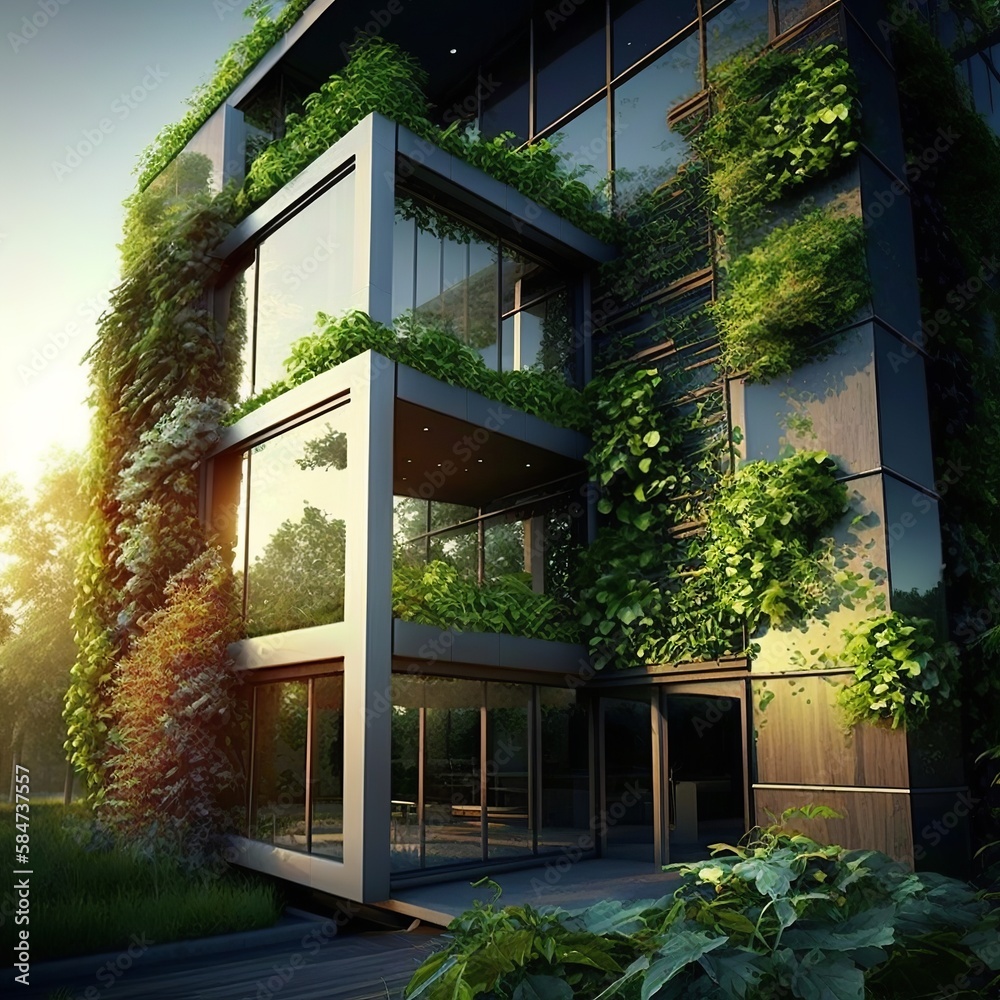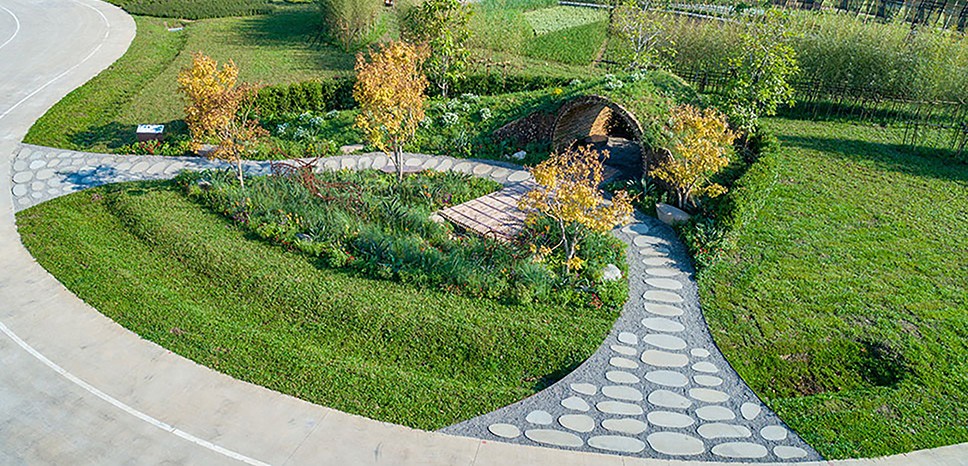Title: How to Create an Eco-Friendly Modern Garden? Create an eco-friendly modern garden by selecting native plants and implementing sustainable water management techniques. Embrace organic gardening practices and choose renewable materials for landscaping.
Also Read
Designing an eco-friendly modern garden combines aesthetic appeal with environmental responsibility. Homeowners are increasingly seeking ways to blend their outdoor spaces harmoniously with nature.
Crafting such a garden requires attention to biodiversity, the use of non-toxic pest control, and materials that are both sustainable and durable.
It’s essential to consider the local ecosystem, opting for plants that thrive naturally in the area. This approach not only reduces maintenance but also supports local wildlife. Efficient water usage is paramount, with rainwater harvesting systems and drip irrigation being popular choices.
By prioritizing these elements, gardeners can create a tranquil, green oasis that is both beautiful and beneficial to the earth. With careful planning, an eco-friendly modern garden becomes a testament to sustainable living and a sanctuary for both humans and nature.
Introduction To Eco-friendly Gardening
Creating an eco-friendly modern garden is a rewarding journey. It blends sustainability with contemporary design. Green spaces are gaining popularity. They offer a sanctuary for both people and wildlife. Gardens can serve as vital eco-systems in urban areas.
They provide fresh air, reduce pollutants, and support biodiversity. Engaging with nature also improves our mental health and physical well-being. By planting native species, we help local wildlife and conserve water. Eco-friendly gardens can even reduce energy costs by moderating home temperatures.
Designing Your Green Space
Creating an eco-friendly modern garden starts with understanding your space. Look at the size, shape, and sunlight areas. Think about the plants that will grow well there. Choose plants that need less water and thrive in your local climate. This helps the environment and saves water.
Sustainability is key in garden design. Use recycled materials for planters and garden decorations. Collect rainwater to water your plants. This way, you’re not just making your garden look good, but also helping our planet. Composting kitchen scraps turns waste into rich soil for your plants, reducing the need for chemical fertilizers.
Selecting Eco-friendly Plants
Selecting eco-friendly plants is crucial for a modern garden. Native species thrive in local conditions. They require less water and fewer chemicals. This supports local wildlife and reduces maintenance.
Drought-resistant varieties are vital for conservation. They withstand dry periods. This minimizes watering needs. Such plants contribute to a sustainable garden ecosystem.
| Native Species Benefits | Drought-Resistant Varieties Benefits |
|---|---|
| Adapted to local climate | Low water requirement |
| Supports wildlife | Survives dry spells |
| Less maintenance | Reduces water bills |
Credit: www.coregravel.ca
Soil And Composting Essentials
Organic Soil Management is pivotal for an eco-friendly garden. Rich, nourishing soil fuels plant growth. Begin by testing the soil’s pH to understand its current condition. Amend with organic materials like peat moss or composted manure to improve soil health. Regularly add organic mulch, which breaks down to enrich the soil. This encourages beneficial microbes and worm activity.
Setting up a compost system is easy and reduces waste. You need a compost bin or a designated area in your garden. Layer green (kitchen scraps, grass clippings) and brown (leaves, shredded paper) materials. Ensure the compost stays moist and aerate it regularly. This process turns waste into valuable compost for your garden. A simple compost recipe includes:
- 1 part green waste: nitrogen-rich materials
- 2 parts brown waste: carbon-rich materials
- A sprinkle of soil to introduce microorganisms
- Water to maintain moisture
Water Conservation Techniques
Creating an eco-friendly modern garden saves water and helps our planet. Two great ways are rainwater harvesting and drip irrigation systems. Collecting rainwater is easy and cheap. You need a barrel to catch water from your roof.
This water can water your plants. Drip irrigation systems send water right to the plant’s roots. This method uses less water than traditional watering. Both techniques save water and keep your garden green.

Credit: stock.adobe.com
Implementing Renewable Energy
Transforming your garden into an eco-friendly space is simpler with solar-powered lighting. These lights harness sunlight during the day and illuminate your garden at night. They’re easy to install and require zero electricity, which makes them a perfect choice for eco-conscious gardeners. Choose from a variety of styles to match your modern garden design.
For gardening tasks, consider using energy-efficient garden tools. Battery-powered tools are now available, which are not only quieter but also produce no emissions. This makes them better for the environment and for your garden’s health. Look for tools with the ENERGY STAR label to ensure maximum efficiency.
Eco-friendly Garden Structures
Creating an eco-friendly modern garden often involves using recycled materials. Garden beds can benefit from repurposed wood or metal, providing a sustainable and aesthetic appeal. Use old bricks or concrete blocks for a rustic look.
Opting for greenhouses ensures plants get enough light while conserving energy. Employ shading techniques with recycled fabric or reclaimed netting to protect plants from harsh sunlight. This approach not only reduces waste but also adds character to your garden.
Attracting Wildlife And Biodiversity
Attracting wildlife enhances garden biodiversity. To create habitats for pollinators, plant native flowers and shrubs. These provide nectar and pollen throughout the year. Include plants like lavender, foxglove, and echinacea. They are favorites among bees and butterflies.
For bird-friendly features, set up bird baths and feeders. Ensure a variety of seeds is available. Build birdhouses for different species. Place them at varying heights to attract a diverse bird population. Use untreated wood to keep them safe.
| Feature | Purpose | Examples |
|---|---|---|
| Native Plants | Food for pollinators | Lavender, Foxglove |
| Bird Baths | Water source | Shallow basins |
| Bird Feeders | Food source | Seed variety |
| Birdhouses | Nesting area | Untreated wood |
Organic Pest Control
Organic pest control is key in an eco-friendly garden. Embrace natural predators like ladybugs to combat pests. These allies naturally maintain balance without harming plants.
Opt for chemical-free solutions to tackle unwanted insects. Consider making a garlic or hot pepper spray, which acts as a repellent. Such methods protect your garden without negative environmental impacts.
Maintaining Your Eco Garden
Maintaining your eco garden requires attention to detail and love for nature. Seasonal care tips ensure your garden thrives year-round. In spring, focus on planting native plants. They need less water and support local wildlife.
Summer calls for mulching to retain soil moisture. Come fall, compost fallen leaves for a nutrient-rich soil additive. Winter is the perfect time to plan next year’s garden layout.
Long-term sustainability practices are key to an eco-friendly garden. Always choose organic fertilizers over chemical ones. They are better for the earth and your plants. Collecting rainwater reduces reliance on tap water, saving precious resources.
Introducing a variety of plants promotes biodiversity, attracting bees and butterflies. Remember, a healthy garden is a sustainable one.
Community Involvement And Education
Creating an eco-friendly modern garden thrives on community spirit. Workshops and sharing sessions bring neighbors together to learn about sustainable practices. These gatherings can cover topics such as composting, native plant selection, and water conservation. They provide a space for gardeners to exchange tips and tricks.
Participation in collaborative gardening efforts also plays a vital role. Groups may form to tend communal garden spaces, sharing the workload and the harvest. This not only fosters a sense of community but also encourages a shared responsibility for the environment.

Credit: www.linkedin.com
Conclusion: The Future Of Gardening
Creating an eco-friendly modern garden supports both personal and planetary health. Simple steps can inspire a green movement. Using native plants saves water and helps local wildlife. Composting enriches soil without chemicals.
Solar-powered lights add beauty sustainably. Gardens become outdoor classrooms for kids, teaching them about nature. By embracing these practices, gardeners contribute to a healthier earth. Everyone’s efforts, big or small, play a part in this vital green movement.
Frequently Asked Questions
What Are Eco-friendly Garden Essentials?
Eco-friendly gardens thrive on natural elements like compost, native plants, and rainwater systems. These essentials reduce chemical use and conserve resources.
How To Select Plants For A Sustainable Garden?
Choose native species that adapt well to local conditions. They require less water, resist pests naturally, and provide habitat for wildlife.
What Is The Importance Of Composting In Gardens?
Composting enriches soil, reduces waste, and cuts down on the need for chemical fertilizers. It’s a natural process that supports plant health and sustainability.
Can I Conserve Water In My Modern Garden?
Absolutely. Implement rain barrels, drip irrigation, and xeriscaping techniques to minimize water usage while maintaining a lush, modern garden.
Conclusion
Crafting an eco-friendly modern garden is within reach. By embracing sustainable practices, you can create a green oasis. Remember, every plant chosen and material used makes a difference. Let your garden be a testament to eco-conscious living. Start today and watch your eco-friendly garden flourish.




